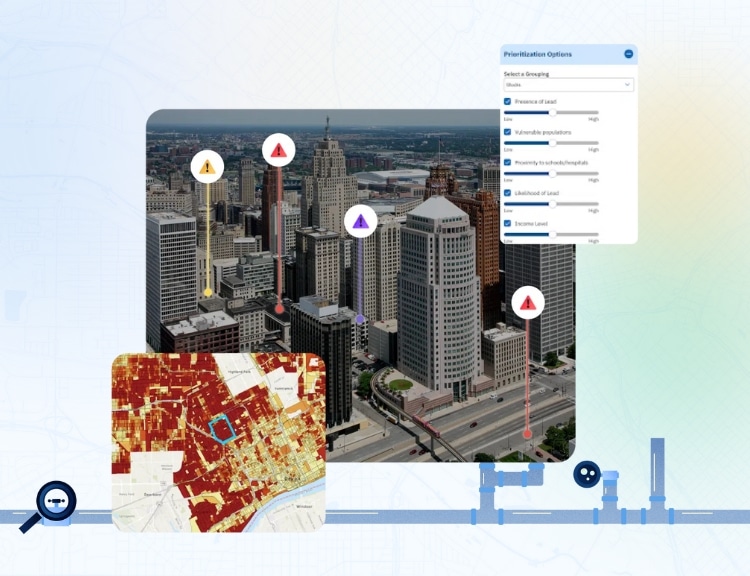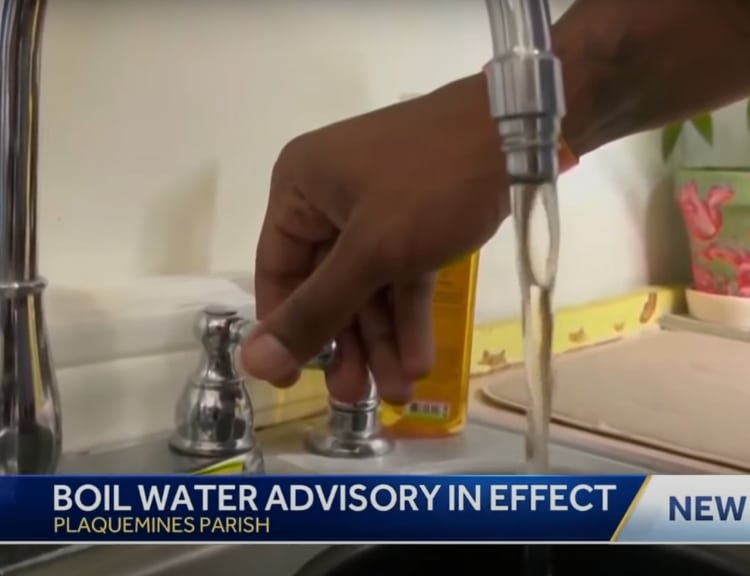Through this partnership, NSF now offers lead service line identification and replacement planning solution for US water utilities.
ANN ARBOR, Mich. – NSF, a global leader in water safety and quality, is excited to announce its partnership with BlueConduit, a pioneer in predictive modeling for lead service lines (LSL). The partnership will enable NSF to offer BlueConduit’s LSL solutions directly, and better reach water utilities with this technology to help remove LSLs across the United States faster and more efficiently.
This strategic partnership leverages NSF’s public health platform and establishment in the water industry with NSF-certified products present in most water distribution networks. NSF also has collaborated with national water authorities, including the Environmental Protection Agency (EPA), the American Water Works Association (AWWA), and the Association of State Drinking Water Administrators (ASDWA) to develop and maintain NSF/ANSI/CAN 61: Drinking Water System Components – Health Effects. This standard has essentially eliminated lead from new and certified plumbing and water distribution products.
This partnership comes in response to the revised Lead and Copper Rule (LCRR), which mandates that all water utilities must provide an initial inventory of their LSLs as a step to help eliminate the estimated 9.2 million LSLs in the next decade Non-compliance will subject utilities to federal enforcement actions. Beyond this immediate requirement, water utilities are responsible for guaranteeing the quality of the water they supply. Violations of the Safe Drinking Water Act, whether for lead or other contaminants, can result in fines, enforcement actions, and even criminal charges based on the severity of the infraction.
“NSF’s and BlueConduit’s partnership perfectly aligns with NSF’s mission of improving human and planet health and continues our efforts to remove lead from drinking water,” said NSF’s Vice President, Dave Purkiss. “Through utilizing this technology, LSLs are more quickly and efficiently located and replaced, reducing lead exposure to the public. Additionally, water utilities can reduce costs involved with the current untimely and invasive methods for evaluating and replacing LSLs.”
BlueConduit’s innovative predictive modeling solution allows water utilities to identify LSLs efficiently, create detailed replacement plans, and report their progress comprehensively. Key features of this service include:
- Tailored, Local Models: Based on unique community analysis, lead/GRR likelihood predictive models are built to ensure the highest accuracy predictions without bias.
- Efficient Classification of Unknowns: BlueConduit LSL Predictions customers spend 90-95% less on service line material identification and complete service line material identification in two to three months, compared to three to 10+ years for physical verification.
- Simple, Clear Written Reports: These reports support full transparency, understanding, and ease of communication and compliance for water systems, regardless of their grounding in data science analytics.
- Delivered Right into Esri: The solution is seamlessly integrated into Esri ArcGIS, a system many water utilities use to monitor outages, water loss, and more. This enables customers to use predictive data alongside other relevant municipal data sets and to take advantage of Esri functionality for Service Line Inventory.
“This partnership allows us to better help water systems utilize predictive modeling to manage LCRR/LCRI requirements, allowing them to compile and maintain inventories and replacement plans as simply, transparently, and efficiently as possible,” states Lorne Groe, CEO, BlueConduit. “By increasing efficiencies, water systems can focus on the work that matters – getting the lead out of the ground and ensuring safe, reliable, and affordable water for the communities they serve.”
For media inquiries, please contact Kara Nicolaides at media@nsf.org.
This press release was originally published on the NSF website.





